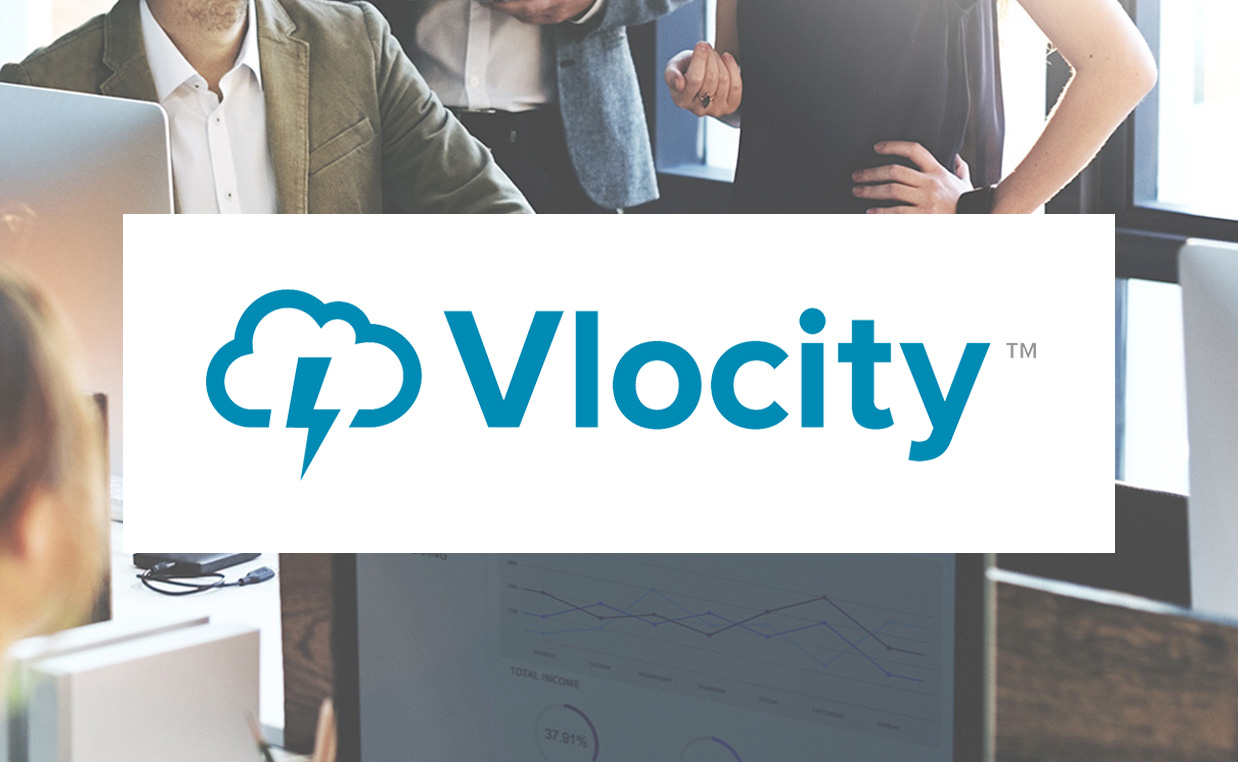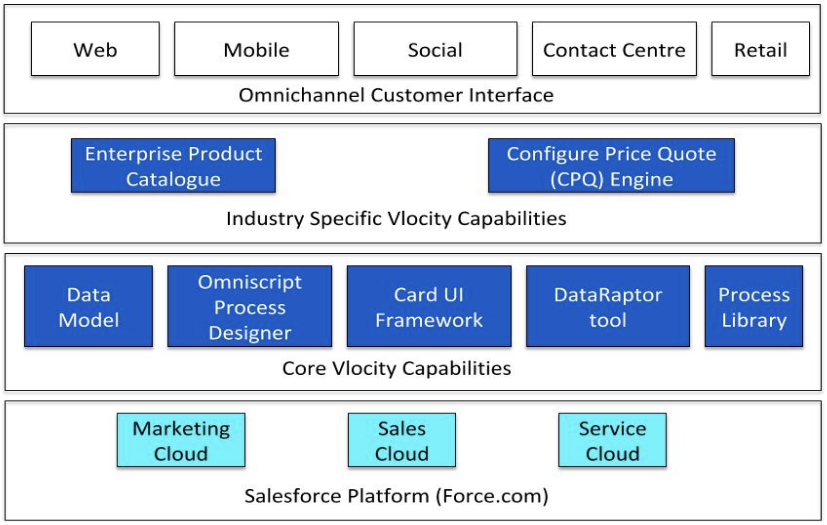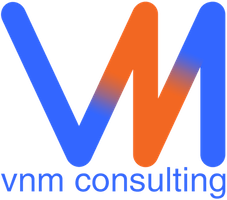
Introduction to Vlocity Industry Vertical Solutions
This article has been written specifically to help an audience that includes business executives, business department heads and business users. The objective is to help this community to understand the business benefits that can be obtained from using industry vertical solutions such as Vlocity.
This article assumes that the reader has some knowledge of the Salesforce ecosystem. It may also be helpful to read the article “It’s a ‘post CRM’ world! To win, businesses need to move to a Customer Experience Platform” at this link https://www.vnmconsult.com/blog/14-customer-experience-platform.
The topics covered are as follows:-
1. What is a Vlocity Industry Vertical Solution?
2. What is the typical structure of Vlocity Solutions?
3. What are the typical business benefits that a business can gain?
1. What is a Vlocity Industry Vertical Solution?
Vlocity is a software application that is built ‘native’ on the Salesforce Platform. This means that it runs within and alongside the rest of Salesforce, in the Salesforce cloud, following all the rules and technical standards that are required, without any further coding or porting.
The Industry Vertical Solutions refer to what capability is provided by the software. In general, it provides the capabilities and toolset that support the unique needs of a specific industry.
The Salesforce platform comes in a standard form that is the same for all industries and all sizes of businesses. It has to be configured, and sometimes modified to meet the business needs.
Vlocity have looked at industries such as Communications and Media, Insurance and others, and then following the strict rules laid down by Salesforce, added the key industry capabilities e.g for Communications and Media, they have added an Enterprise Product Catalogue and a sophisticated Configure Price Quote (CPQ) engine.
2. What is the typical structure of Vlocity Solutions?
The diagram in Figure 1 below shows a simplified structure of a Vlocity solution.

The foundation is the Salesforce Platform with the functional clouds for Marketing, Sales and Service and their associated databases.
Integrated into this platform are the key Vlocity Industry solution layers:-
- Core Vlocity Capabilities
- Industry Specific Vlocity Capabilities
In this article, we concentrate on the Core Vlocity Capabilities.
Core Vlocity Capabilities
With these core capabilities, Vlocity have built two things:-
- Tools that enable rapid configuration of functionality based on ‘click vs code’
- Omniscript Process Designer
- Card User Interface Framework
- DataRaptor integration tool
- Industry-specific foundation components
- Data model extended with relevant additional data entities(Objects in Salesforce) and additional data fields
- Process Library containing standardised industry processes ready to deploy
A. Omniscript Process Designer
Vlocity Omniscript is a process design and configuration tool all built into a drag and click framework, which generates the appropriate code in the background. It provides a menu of functional components that allows the process designer to drag and drop functional steps into the desired sequence. The functional components currently available are:-
- Actions e.g. to perform a calculation, extract data
- Display e.g. to display various fields
- Functions e.g. to use a formula
- Groups e.g. to divide the process into logical blocks
- Inputs e.g. to provide input values, or a checkbox
These components can be configured in detail through a mixture of radio button selectors, drop down boxes, field entry, and also boolean logic – – once again there is NO CODING required.
A further really important feature is the ability to preview the process just designed – this capability allows the process designer to test while designing, and work iteratively to get the right process.
So if you combine these features together, you have the ability to rapidly develop and test processes without requiring coding.
B. Card User Interface Framework
This capability provides a ‘Console’ feature. This is effectively a configurable user interface, and typically can be used for call centre representatives.
Its key features include:-
- A sidebar to show a 3600 view of the customer
- A central bar that can be configurable for processes, workflows and actions
- Customisable templates for example for Branding
This combined together allows for rapid creation of guided selling workflows which dynamically adjust based on the customer context.
C. DataRaptor Integration Tool
Vlocity DataRaptor is a declarative ETL tool which is native on Salesforce. You can manage complex data structures natively on the Salesforce platform with declarative data mapping. Vlocity DataRaptor simplifies the integration of external data by loading, extracting and transforming hierarchical structures in standard formats. Integrations are now faster to implement and easier to maintain.
D. Data model
The Salesforce Platform comes with a standard structure for data in the form of Objects. This is the same for all industries.
What Vlocity have done is taken the requirements for an industry and then extended the standard object structure in Salesforce to meet the specific data needs. For example for Communications and Media, the TMForum data model has been applied.
What this means is that solution designers and architects do not need to spend time mapping and configuring data models to suit the industry needs.
E. Process Library
Most industries have developed a set of processes that are relevant to serve their customers. However, the standard Salesforce Platform does not come with ready-built processes. They have to be designed and then implemented, usually requiring some form of customisation or development.
What the Vlocity solution provides is a relevant Process Library. This holds a set of processes that are considered to be standard for an industry. These can be downloaded and applied.
What this means is that an enterprise can start using the solution with these processes without necessarily going through a design from scratch process. Vlocity are still developing their process libraries, so some industries are currently less well served than others.
3. What are the typical business benefits that a business can gain?
The use of Vlocity Industry Vertical Solutions provides some significant benefits:-
- Improved Customer Experience
The Vlocity capabilities allow the deployment of customer facing features in a consistent manner across all channels. The big benefit is that you only need to configure once, and then you can deploy to omnichannel – so no time wasted redeveloping for each channel such as mobile or web. - Single solution for B2C and B2B
There is no need to get different solutions nor configure additional components – the Vlocity solution can effectively support both consumer and business segments - Rapid deployment
The Vlocity solutions provide a higher level capability that means that detail coding is not required and workflows, processes, functionality can be developed rapidly and iteratively.
In addition, the industry-relevant features mean that a significant amount of the industry foundations are already available and hence do not need to be configured or developed.
These result in a huge benefit of speed to deployment - Reduced effort to implement
With the combination of industry capabilities, plus the core Vlocity tools, the amounts of effort for business analysis and design, for development/coding and for testing can be reduced compared to implementing a non-industry solution.
Next Steps
For further information and help with Vlocity Solutions please click here or contact Vinod Mistry at vinod.mistry@vnmconsult.com, or +44 7771 662746.

This Post Has 0 Comments